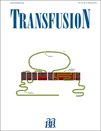Postponing or eliminating red blood cell transfusions of very low birth weight neonates by obtaining all baseline laboratory blood tests from otherwise discarded fetal blood in the placenta
Abstract
BACKGROUND: Safely reducing the proportion of very low birth weight neonates (<1500 g) that receive a red blood cell (RBC) transfusion would be an advance in transfusion practice.
STUDY DESIGN AND METHODS: We performed a prospective, single-centered, case-control, feasibility analysis, preparatory to designing a definitive trial. Specifically, we sought to determine whether we could obtain all baseline neonatal intensive care unit blood tests from the placenta, after placental delivery, thereby initially drawing no blood from the neonate.
RESULTS: Ten cases where all baseline blood tests were drawn from the placenta, and 10 controls where all tests were drawn from the neonate, were closely matched for birth weight, gestational age, sex, and race. Early cord clamping was used for all 20. Over the first 18 hours the hemoglobin increased in nine cases versus two controls (p = 0.005). During the first 72 hours one case versus five controls qualified for and received an RBC transfusion. In the first week the cases received four transfusions and the controls received 16 (p = 0.02). None of the cases had an intraventricular hemorrhage (IVH) but four of the controls had a Grade 1 and two had a Grade 3 (p = 0.01).
CONCLUSION: We speculate that this method is feasible and generally postpones the first RBC transfusion until beyond the period of peak vulnerability to IVH.




